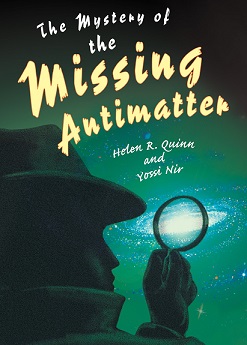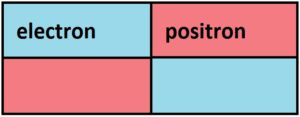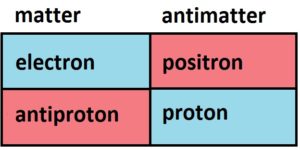When I google on mysteries of physics, a whole pile of websites comes up. Top of the list is the 18 biggest unsolved mysteries in physics. It’s a Livescience article written by Natalie Wolchover and Jesse Emspak. It makes for interesting reading, especially for me. That’s because I’m the physics detective. I solve mysteries. Some people don’t. Instead some people peddle mystery. Because mystery sells, just like quantum sells. That’s why CERN peddle the myth that antimatter might fall up, even though everybody who knows about relativity knows it doesn’t. Sadly that sort of thing is all too common, as described by Sabine Hossenfelder in her recent blog post merchants of hype. Too many physicists and cosmologists think their job “is not to bring enlightenment; it is to bring excitement”. I don’t agree with that, because I think enlightenment is exciting, not mysticism. And to put my money where my mouth is, I’m going to tell you about the 18 biggest unsolved mysteries in physics. The first mystery is an old favourite:
What is dark energy?
No matter how astrophysicists crunch the numbers, the universe simply doesn’t add up. Even though gravity is pulling inward on space-time — the “fabric” of the cosmos — it keeps expanding outward faster and faster. To account for this, astrophysicists have proposed an invisible agent that counteracts gravity by pushing space-time apart. They call it dark energy. In the most widely accepted model of dark energy, it is a “cosmological constant”: an inherent property of space itself, which has “negative pressure” driving space apart. As space expands, more space is created, and with it, more dark energy. Based on the observed rate of expansion, scientists know that the sum of all the dark energy must make up more than 70 percent of the total contents of the universe. But no one knows how to look for it. The best researchers have been able to do in recent years is narrow in a bit on where dark energy might be hiding, which was the topic of a study released in August 2015.
There’s a lot wrong with the above. Gravity isn’t pulling inward on spacetime. Spacetime models space at all times, and is thus static. Gravity isn’t pulling inward on space either. Einstein said a gravitational field is a place where space is “neither homogeneous nor isotropic”, and he dismissed Gullstrand-Painlevé coordinates for good reason: we do not live in some Chicken-Little world where space is falling down. Instead it’s better to think of a gravitational field as a pressure gradient in space. Even Newton knew about this:
 Fair use excerpt from Newton’s views on aether and gravitation by Léon Rosenfeld 1969
Fair use excerpt from Newton’s views on aether and gravitation by Léon Rosenfeld 1969
Then think of the universe expanding because space has an innate pressure, like a squeezed-down stress ball. As to why Einstein didn’t, I don’t know. He knew how gravity works. He was in on the ground floor of dark energy. He knew about Schrödinger’s cosmic pressure, which dates from 1919. He knew that tension is negative pressure. He knew about the stress energy-tensor with its energy-pressure diagonal. He also knew about conservation of energy, and about treating space as some kind of gin-clear ghostly elastic continuum. He described space as the aether of general relativity, which matches both Newton and the modern view of the quantum vacuum. But he wasn’t born in the USA. So he didn’t chew gum. If he had, he would have thought about the cartoon of his cosmology co-author Willem de Sitter:
 Sketch in the Algemeen Handelsblad of 9 July 1930, as reproduced in Peebles (1993 p81)
Sketch in the Algemeen Handelsblad of 9 July 1930, as reproduced in Peebles (1993 p81)
Then he would surely have considered the universe to be like a bubble-gum balloon in vacuum. A normal balloon is where the internal pressure of the gas is counterbalanced by the tension in the skin. However when a bubble-gum balloon expands due to the internal pressure, the skin gets thinner and weaker, and less able to resist the further expansion. So it expands further, so the skin gets even thinner and weaker, and so on. So the expansion speeds up. Not because dark energy is being magicked into existence. Because space has both a cosmic pressure and a tensile strength. And because this “strength of space”, which is mentioned on page 5 of Mordehai Milgrom’s MOND paper, is reducing. Meanwhile energy, that fundamental thing we can neither create nor destroy, is conserved. Sadly Einstein wasn’t born in the USA, so this sleeping beauty has been lying around for a hundred years. Not for much longer I hope, because it’s simple enough: dark energy is both the innate cosmic pressure of space, and the reducing tensile strength of space. What’s next? Ah, another old favourite:
What is dark matter?
Evidently, about 84 percent of the matter in the universe does not absorb or emit light. “Dark matter,” as it is called, cannot be seen directly, and it hasn’t yet been detected by indirect means, either. Instead, dark matter’s existence and properties are inferred from its gravitational effects on visible matter, radiation and the structure of the universe. This shadowy substance is thought to pervade the outskirts of galaxies, and may be composed of “weakly interacting massive particles,” or WIMPs. Worldwide, there are several detectors on the lookout for WIMPs, but so far, not one has been found. One recent study suggests dark mater might form long, fine-grained streams throughout the universe, and that such streams might radiate out from Earth like hairs. [Related: If Not Dark Matter, then What?]
This starts well, but then it goes awry when it starts talking about WIMPs. Why do people presume dark matter must consist of particles? Especially when in 1916 Einstein said “the energy of the gravitational field shall act gravitatively in the same way as any other kind of energy”. Gravitational field energy has a gravitational effect, and it isn’t made up of WIMPs. It’s not unlike what Newton was saying about density. Space has its vacuum energy, and if a region of space has a greater energy density than the surrounding space, the extra energy has a mass-equivalence and a gravitational effect. Because the mass of a body is a measure of its energy content, and you can treat a region of space as a body. Remember that Einstein said a gravitational field is a place where space is “neither homogeneous nor isotropic”, and note that modern authors write papers like inhomogeneous vacuum: an alternative interpretation of curved spacetime and inhomogeneous and interacting vacuum energy. That’s important because of the raisin-cake analogy:
 Image from Rod Nave’s hyperphysics, see the expanding universe
Image from Rod Nave’s hyperphysics, see the expanding universe
As the raisin cake bakes, it rises and gets bigger. However the raisins don’t get bigger. They represent the galaxies, so space expands between the galaxies but not within. When space expands, conservation of energy ought to tell you that the spatial energy density must reduce. Then you can reason that the extra spatial energy within the galaxies has a mass equivalence and a gravitational effect. Then common sense ought to tell you that there’s no hard-and-fast boundary. Instead every galaxy must be surrounded by a “halo” of inhomogeneous space. And that’s what a gravitational field is! It’s worth knowing that in the history of field theory in 1929 Einstein talked about a field as a state of space. He’d previously said the contrast between ether and matter would fade away. He was saying the contrast between space and matter would fade away. So it’s reasonable to expect the contrast between space and dark matter to fade away. Space is dark, it has its vacuum energy, and there’s a lot of it about. When it’s inhomogeneous, the extra vacuum energy has a mass-equivalence and a gravitational effect. So dark matter is just denser space. What’s next?
Why is there an arrow of time?
Time moves forward because a property of the universe called “entropy,” roughly defined as the level of disorder, only increases, and so there is no way to reverse a rise in entropy after it has occurred. The fact that entropy increases is a matter of logic: There are more disordered arrangements of particles than there are ordered arrangements, and so as things change, they tend to fall into disarray. But the underlying question here is, why was entropy so low in the past? Put differently, why was the universe so ordered at its beginning, when a huge amount of energy was crammed together in a small amount of space? [What’s the Total Energy in the Universe?]
Time doesn’t move forward at all. Things move, and to make something move you do work on it. In doing so you expend energy. So I prefer to say entropy is to do with energy dispersal. Particularly since energy is fundamental whilst disorder isn’t. Matter is made of energy, not disorder. From the energy-dispersal, energy-density viewpoint, entropy is merely “sameness”. Time doesn’t move forward because sameness is increasing. Like I said, time doesn’t move at all. Things move. Then we measure these things that move using other things that move. Things like cogs and sprockets in clocks. That’s what Einstein’s operational definition of time was all about. That’s what the nature of time is all about. Time isn’t something that literally flows or passes. A clock is not like a gas meter. Open up a clock and you won’t find time flowing through it. The internal mechanism of a clock isn’t called a movement for nothing. All you’ll find is some kind of regular cyclical internal motion. Time is just a cumulative measure of that motion, and motion is motion whichever way it goes. There is no such thing as negative motion. That’s why you can’t point to the future, and I can’t point to the past. That’s why time doesn’t run backwards when you put your dominoes back in the box. Yes you can look at two pictures and guess how the particles moved:
 Image from energy education, a University of Calgary website, edited a little by me
Image from energy education, a University of Calgary website, edited a little by me
So you can assign an arrow of sorts. But it’s more of an arrow of motion than an arrow of time. An arrow of change. But who’s to say it’s the arrow of entropy? Who’s to say entropy was so low in the past? We talk about the heat death of the universe, where the energy-density is the same everywhere, so we can’t do any work, and entropy is high. But it’s entirely possible that the early universe is one where entropy was high. Imagine a universe that was a smaller place then. A confined space where nothing could move. Look at the picture above, and imagine a much smaller box around the nine blue dots on the left combined like this: ∎. The universe would be something like the “frozen star” black hole. A universe without motion, without time, without difference, without work. But then the Big Bang happened and the universe got bigger. So now there was room for motion, and room for variations in energy density, and work, and time. So why is there an arrow of time? There isn’t really an arrow of time. It’s an arrow of motion, and like I said, motion is motion whichever way it goes. So the answer to the question is because shіt happens, that’s why.
Are there parallel universes?
Astrophysical data suggests space-time might be “flat,” rather than curved, and thus that it goes on forever. If so, then the region we can see (which we think of as “the universe”) is just one patch in an infinitely large “quilted multiverse.” At the same time, the laws of quantum mechanics dictate that there are only a finite number of possible particle configurations within each cosmic patch (10^10^122 distinct possibilities). So, with an infinite number of cosmic patches, the particle arrangements within them are forced to repeat — infinitely many times over. This means there are infinitely many parallel universes: cosmic patches exactly the same as ours (containing someone exactly like you), as well as patches that differ by just one particle’s position, patches that differ by two particles’ positions, and so on down to patches that are totally different from ours. Is there something wrong with that logic, or is its bizarre outcome true? And if it is true, how might we ever detect the presence of parallel universes? Check out this excellent perspective from 2015 that looks into what “infinite universes” would mean.
Whoa, a flat universe doesn’t have to be an infinite universe. That’s a non-sequitur that started gaining popularity relatively recently. Yes, Einstein tussled with his “boundary conditions” in his 1917 cosmological considerations in the general theory of relativity, but it wasn’t long ago when people were talking about a universe the size of a grapefruit. Marcus Chown talked about a universe the size of a grapefruit in his review of Alan Guth’s 1997 book The Inflationary Universe. Jeremiah Ostriker and Paul Steinhardt talked about a universe the size of a grapefruit in The Quintessential Universe in SciAm in 2002. John Gribbin talked about a universe the size of a grapefruit in his 2008 book The Universe: A Biography. These guys weren’t talking about the observable universe. They were all talking about the universe, the whole universe, and nothing but the universe.
 PKDGRAV3 image cropped and colour-reversed by me, see supercomputer simulates entire universe
PKDGRAV3 image cropped and colour-reversed by me, see supercomputer simulates entire universe
However if you search the internet today for universe size of a grapefruit, you find articles like the three things everyone gets wrong about the Big Bang written by Matt von Hippel in 2014. He says the observable universe was once the size of a grapefruit. You also find where is the edge of the universe? written by Chris Baird in 2016. He says the only way for the universe to be flat and uniform everywhere is for the universe to be infinite and have no edge. He also says the universe started out as an infinitely large object at the time of the Big Bang, and has grown into an even bigger infinitely large object. I don’t buy it, and not just because it’s some sleight-of-hand change to decades of Big Bang cosmology. I don’t buy it because an infinite universe can’t expand. Imagine a cube of air in front of your face. It doesn’t expand because the pressure is counterbalanced in all directions. The same applies to a cube of space in infinite space. Nor do I buy what ESA’s Joe Silk said in the 2001 interview Is the universe finite or infinite? He said this: “So you have two possibilities for a flat Universe: one infinite, like a plane, and one finite, like a torus, which is also flat”.
 Toroidal universe image by J Law, see fineartamerica
Toroidal universe image by J Law, see fineartamerica
I don’t buy it because it’s taking the cosmological principal too far and treating an assumption like a scientific fact. It isn’t a scientific fact. For all we know some kid 46 billion light years away is looking up at the clear night sky wondering why half of it is black. Or a mirror image of the other. For all we know the universe has an edge. A place where light waves undergo total internal reflection. And matter waves too. I am reminded of something de Sitter said in his 1917 paper. He said this: “if the gμν at infinity are zero of a sufficiently high order, then the universe is finite in natural measure”. If it’s finite in natural measure there is no place beyond the edge of space. There is no beyond it. There is no more space, and no place for waves in space to go. But what do we get instead? Some science-fiction Goldilocks multiverse, where there’s an infinite number of people just like me tippy-tapping away on their laptop. It’s pseudoscience trash. Are there parallel universes? No. There are flip-side flat-Earthers instead: the story goes that in days of old, people could not conceive of a world that was curved. They could only conceive of a world with an edge. Nowadays we have cosmologists who cannot conceive of a world that is not curved. They cannot conceive of a world with an edge.
Why is there more matter than antimatter?
The question of why there is so much more matter than its oppositely-charged and oppositely-spinning twin, antimatter, is actually a question of why anything exists at all. One assumes the universe would treat matter and antimatter symmetrically, and thus that, at the moment of the Big Bang, equal amounts of matter and antimatter should have been produced. But if that had happened, there would have been a total annihilation of both: Protons would have cancelled with antiprotons, electrons with anti-electrons (positrons), neutrons with antineutrons, and so on, leaving behind a dull sea of photons in a matterless expanse. For some reason, there was excess matter that didn’t get annihilated, and here we are. For this, there is no accepted explanation. The most detailed test to date of the differences between matter and antimatter, announced in August 2015, confirm they are mirror images of each other, providing exactly zero new paths toward understanding the mystery of why matter is far more common.
Unfortunately the people who promote themselves using the mystery of the missing antimatter never tell you that baryon asymmetry is matched by lepton asymmetry. They ought to know better, because they know that matter and antimatter have the opposite charge and the opposite chirality. But they don’t. They say antimatter is super rare but didn’t used to be, and then they wonder where it all went. The CERN webpage on the matter-antimatter asymmetry problem is typical of that. It says the Big Bang should have created equal amounts of matter and antimatter, but “something must have happened to tip the balance”, because everything we see today “is made almost entirely of matter”. You’d think they’d never heard of positronium, but a quick google says they have. See AEgIS makes positronium for antimatter gravity experiments. It says this: “Positronium atoms, which consist of an electron and a positron, are one type of antimatter atoms being considered”. The trouble with that is that positronium isn’t an antimatter atom. It’s “a system consisting of an electron and its anti-particle, a positron, bound together into an exotic atom”. The electron is matter, and the positron is antimatter. Positronium however is neither matter nor antimatter. It’s both. It’s an exotic atom. Now see page 314 of photon and electron collisions with atoms and molecules edited by Philip Burke and Charles Joachain. It says “the positronium atom thus created is in essence a very light hydrogen atom”. Positronium is both matter and antimatter, it’s like light hydrogen, and you don’t need to be Sherlock Holmes to work this one out.
 Image from Princeton university press
Image from Princeton university press
In terms of mass, circa 74% of the stuff we can see is hydrogen. Helium is circa 23%. That adds up to 97%, which is close enough. Let’s forget about the other 3%. Let’s also forget about the neutrons in the helium, because if they were free they’d undergo beta decay and turn into electrons and protons and antineutrinos. Let’s forget about the antineutrinos too. Can you hear the dog barking in the night? I can’t either. There does not appear to be a surplus of electrons as opposed to protons, or vice versa. There’s baryon asymmetry, where we see lots of protons but hardly any antiprotons, but there’s also lepton asymmetry where we see lots of electrons but hardly any positrons. And they match. Talking of which, have you ever played a tennis match? A mixed doubles tennis match? Did it end in a draw? No. One side won, didn’t it? So, let’s play tic tac toe with matter and antimatter. I draw a 2 x 2 table and put electron in one of the cells. Then you put positron in the adjacent cell, like this:

Now I have to put proton into one of the cells. Let’s see now. The proton isn’t much like the electron, and it isn’t much like the positron either. But since it’s positively charged like the positron, it’s more like the positron than it’s like the electron. So I’ll put it under the positron. That leaves only one cell free, so you have to put antiproton under the electron. Now I add the headings, like so:

Has the penny dropped yet? The proton isn’t matter, it’s antimatter. Hydrogen, which consists of an electron and a proton, isn’t matter or antimatter. Like positronium, it’s both. Antimatter is so labelled only by convention. A convention that forgets that the particles are matter or antimatter, and combinations are both. In mixed doubles tennis, one side is always going to win in the end. Ditto for the early universe. The balance will always tip, particularly since you can destroy particles or antiparticles in a quark-gluon plasma, or in things like gamma ray bursts. So the blue team won. Like the wife and I won last time we played a game of mixed doubles. Unfortunately the people who don’t understand the mystery of the missing antimatter say the men won, and then ask where all the women went. Even though electrons and protons are attracted to one another, like men and women are attracted to one another. They form a stable bond, a marriage made in heaven called a hydrogen atom. And here we are. We don’t find right-handed amino acids where we live. Or left-handed sugars. But we don’t wonder about the mystery of the missing anti-sugar. So we shouldn’t wonder about the mystery of the missing antimatter either. Especially since we say the electron is matter. Especially since the proton is 1836 times heavier than the electron, which means antimatter is rather more common than you think. Weight for weight and pound for pound, 99.95% of everything around you is antimatter. Why is there more matter than antimatter? There isn’t. The electron is matter, the proton is antimatter, so the antimatter is hiding in plain sight. So truth be told and by and large, you are made of it.